5.65.130 Abutted property, one street frontage.
An abutted property with one street frontage is assessed on the basis of its actual street frontage, if regularly shaped. If the property is irregularly shaped, it is assessed on the basis of an average of the street frontages of regularly shaped neighboring properties.
(a) Regularly Shaped Property. A regularly shaped subdivision lot is one which is basically square or rectangular, and is not located at the intersection of two streets or roads. The lot has four sides (straight or somewhat rounded) or five sides; provided, that its four longest sides account for at least 90 percent of its total perimeter. Additionally, a regularly shaped lot has a street frontage which is within 30 percent (plus or minus) of the length of its rear property line. For example, if the lot’s rear property line is 100 feet, its street frontage would need to measure at or between 70 and 130 feet. A regularly shaped lot with one street frontage is assessed on the basis of its actual street frontage, whether fully or partially abutted.
Examples of Abutted Regularly Shaped Properties with One Street Frontage
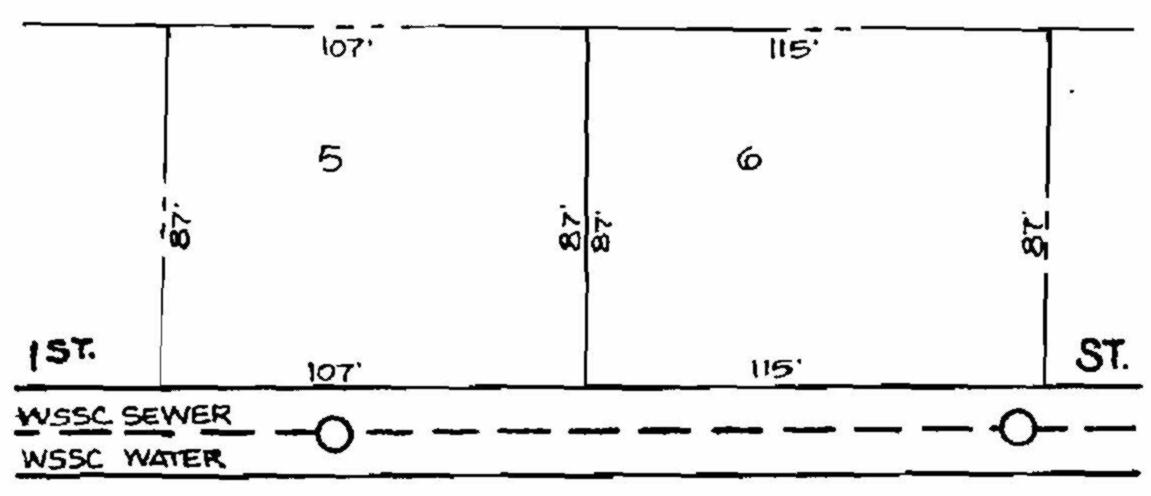
Lots 5 and 6 are both four-sided regularly shaped lots, abutted on First Street. Lot 5 would therefore be assessed for 107 feet of frontage, and Lot 6 assessed for 115 feet of frontage.
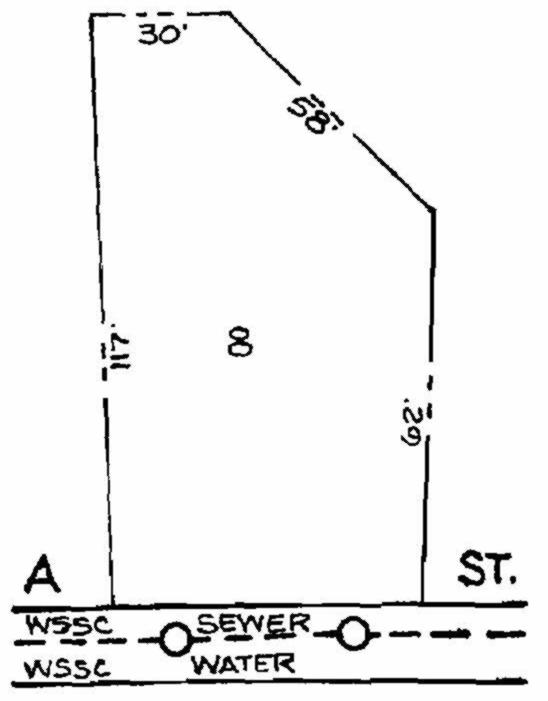
Lot 8 is a five-sided lot. Its four longest sides account for at least 90 percent of its total perimeter. Lot 8, therefore, is regularly shaped and would be assessed for its actual frontage of 62 feet for water and sewer.
Example of Partially Abutted Regularly Shaped Lot, One Street Frontage
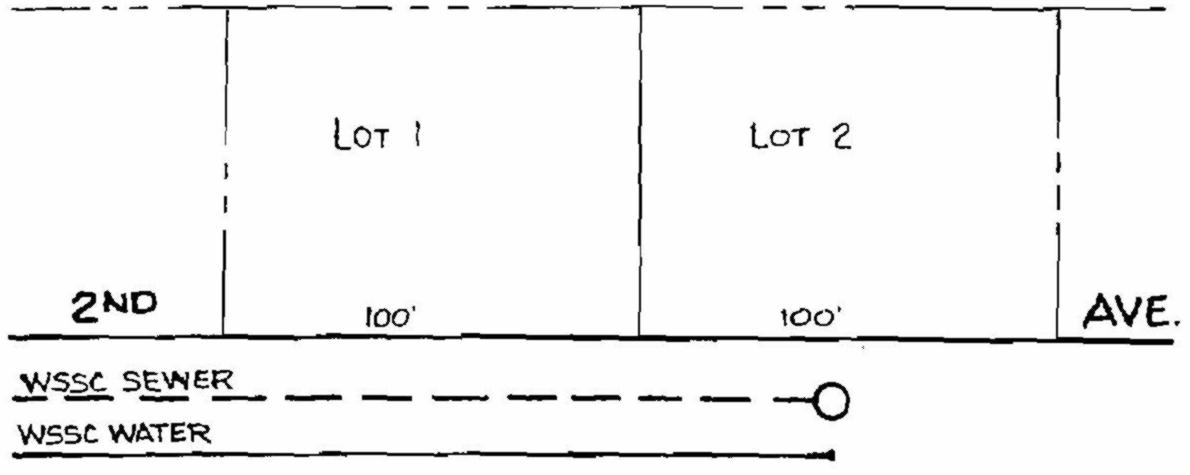
Although the street frontage for Lot 2 is partially abutted, it receives the same benefit as Lot 1. Therefore, Lot 2 would be assessed its full street frontage of 100 feet.
(b) Irregularly Shaped Property. Any subdivision property which has one street frontage and is not shaped as described in subsection (a) of this section is an irregularly shaped lot. For example, cul-de-sac lots (those located on the closed end of a street), as well as flag, panhandle and pie-shaped lots, are nearly always irregularly shaped. Because an irregularly shaped lot typically has a disproportionately small or large street frontage, its street frontage is not used to assess the property. Rather, the lot is assessed on the basis of the average street frontage of all neighboring regularly shaped lots, that is, all regularly shaped lots located on the same and/or adjacent blocks, as the term is used in legal descriptions of properties.
Example of Irregularly Shaped Lots
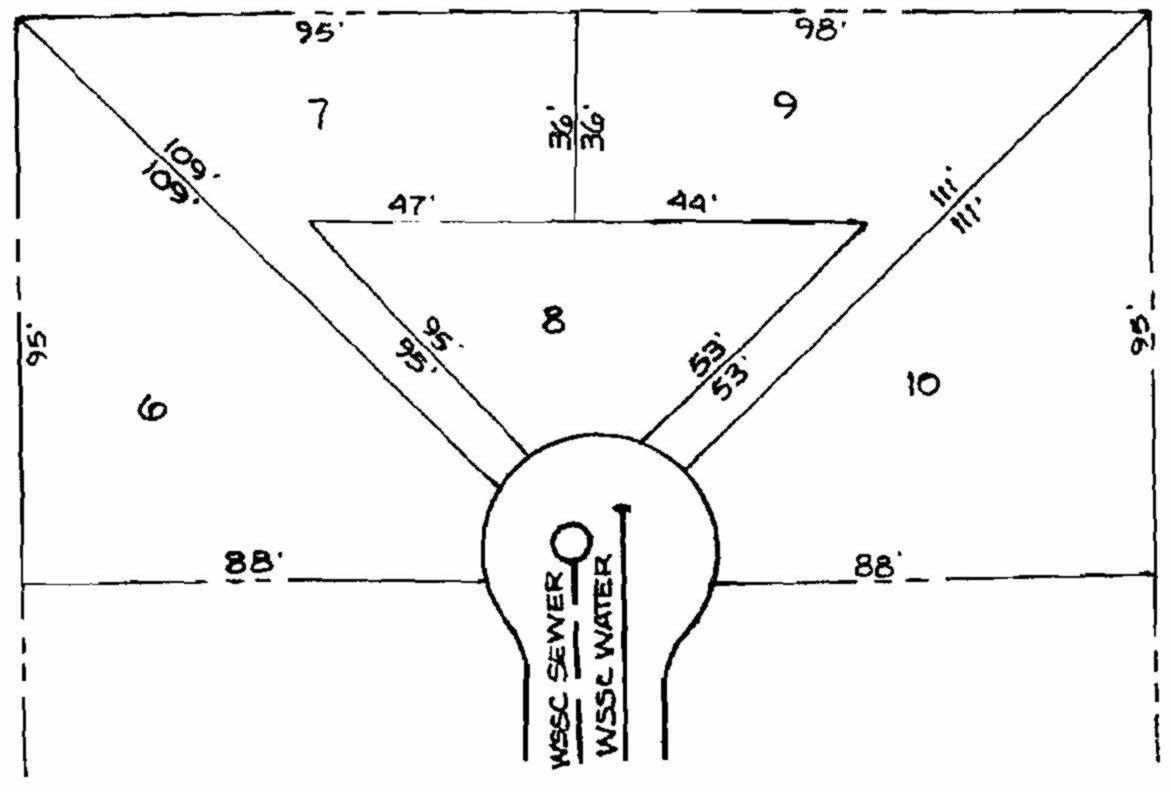
Lots 6 through 10 are all irregularly shaped lots (cul-de-sac, pie, flag or panhandled).
Examples of both Irregularly and Regularly Shaped Lots
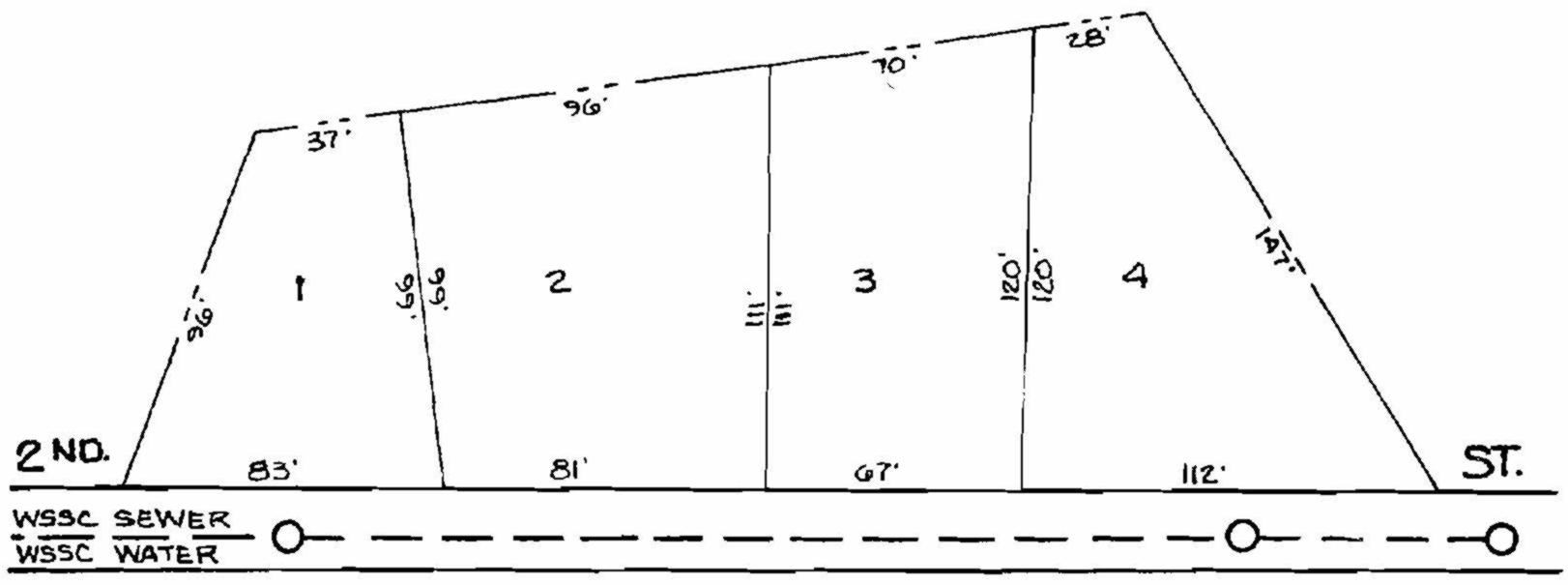
Lots 2 and 3 are regularly shaped and assessed their actual street frontages. Lots 1 and 4 are irregularly shaped and would be assessed 74 feet, which is the average street frontage for regularly shaped Lots 2 and 3 (81+ 67 feet divided by two). (Property assessments manual § 3.1, dated October 1998)